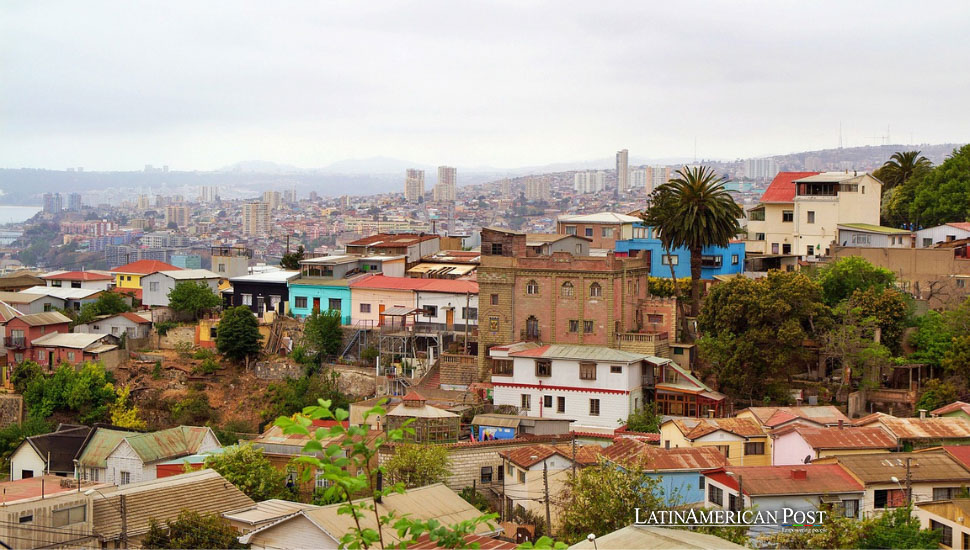Crime Surge Threatens Chile’s Tourism Business and Global Appeal

Chile, a country not typically associated with violence, has seen a recent increase in criminal activity, prompting the U.S. government to issue a Level 2 travel advisory. This could impact its thriving tourism industry, especially in popular destinations like Santiago and Valparaiso.
Chile’s Reputation as a Safe in Jeopardy
Chile has long been considered a relatively safe destination for travelers, particularly compared to some of its Latin American neighbors. Known for its stunning landscapes, from the arid Atacama Desert to the striking peaks of Patagonia, Chile has carved out a niche as a peaceful haven for adventure seekers and urban explorers alike. Cities like Santiago and Valparaiso offer vibrant cultural scenes, and the country’s extensive coastline provides ample opportunity for beach vacations.
In the broader Latin American context, Chile has been considered a secure country for international visitors, especially U.S. tourists, who comprise a significant portion of its tourism industry. This perception of safety has been critical in drawing millions of tourists each year, with many visitors seeing Chile as a destination where they can enjoy their vacation without the high crime risks that sometimes accompany travel in other parts of the continent.
However, the recent Level 2 travel advisory issued by the U.S. Department of Travel has questioned this reputation. The advisory was issued on September 10, 2024, and it urges American tourists to exercise increased caution due to increased thefts and assaults in major metropolitan areas like Santiago, Valparaiso, and Viña del Mar. The advisory particularly highlights the area around Santiago International Airport, a crucial entry point for tourists, making the warning alarming for tourists and local businesses.
The Warning and What It Means for Tourists
The Level 2 advisory, which encourages travelers to “remain alert and vigilant in public areas,” is a significant message from the U.S. government. While it doesn’t recommend canceling trips, it warns American tourists about the heightened risks of robberies and assaults, particularly in highly visited areas. These include popular spots like Persa Bio Bío, Santiago’s largest market, Cerro Santa Lucia in the city’s historic center, and Estación Mapoco, a former train station now serving as a cultural hub.
Tourists are advised to maintain a low profile, travel in groups, and avoid going out alone after dark. The advisory also underscores the need for vigilance in displaying valuables, such as jewelry, electronics, and cash, as these items make tourists easy targets for opportunistic thieves. Warnings to avoid physical resistance during a robbery and to be cautious when renting vehicles add another layer of caution that may deter some visitors.
For American tourists, this warning reminds them that crime can affect even the most well-known and often-visited cities. Travelers who may have once been drawn to Chile for its natural beauty and urban sophistication now must consider their safety more carefully, particularly when moving through crowded urban areas or visiting popular tourist spots.
What’s more concerning is the crime data provided by the Chilean government, showing a rise in reported thefts and robberies. In the first six months of 2024, Chile recorded 137,644 thefts and 55,563 robberies, signaling a jump in the country’s crime rate compared to previous years. Though the advisory does not explicitly discourage travel, such figures may be enough to influence potential tourists to reconsider their plans or opt for alternative destinations that are perceived as safer.
Parallels in Latin America’s Tourism and Crime Nexus
Chile’s current situation brings to mind similar instances in other Latin American countries where tourism has been affected by spikes in crime. For example, Mexico, despite being one of the most visited countries in the world, has long struggled with its reputation for violence and crime, particularly in areas dominated by drug cartels. Cities like Acapulco, once bustling with tourists, have significantly declined visitors due to rising crime rates and travel advisories from various countries.
Similarly, Brazil, another major tourist destination, faced challenges in attracting international visitors leading up to the 2016 Olympics in Rio de Janeiro. Despite the government’s efforts to beef up security, concerns about street crime, robberies, and assaults persisted. The international spotlight on the Olympics helped temporarily address these issues, but Rio’s crime problem has continued to affect tourism numbers.
In Colombia, Medellin has become a model for crime reduction and urban regeneration. Once considered one of the most dangerous cities in the world due to its association with drug cartels in the 1980s and 1990s, Medellin has transformed. By focusing on urban development, social programs, and enhancing public safety, the city has experienced a resurgence in tourism. However, the lingering association with violence still deters some potential visitors.
These historical parallels suggest that Chile’s current challenge is not unique but part of a broader issue many Latin American nations have faced at various points. While crime can negatively impact tourism in the short term, how a country responds—improving safety, building trust, and promoting new initiatives—can determine its long-term success as a tourist destination.
How Chile’s Tourism Industry Can Respond
The question is how Chile’s tourism sector can respond to the growing concerns raised by the U.S. travel warning. The tourism industry, which has become an essential part of Chile’s economy, must proactively address the perceived rise in crime and restore confidence in travelers.
First and foremost, improved security measures in key tourist areas are crucial. Local governments and tourism boards in cities like Santiago, Valparaiso, and Viña del Mar should collaborate to increase police presence in popular tourist spots, especially near airports and major attractions. Increased surveillance and visible law enforcement could serve as deterrents to petty crime, such as pickpocketing and robberies, which often target unsuspecting tourists.
In addition to increasing security, the Chilean government can launch public awareness campaigns to educate tourists and locals about safe travel practices. Tourists can be encouraged to follow the same guidelines recommended by the U.S. travel advisory—keeping a low profile, traveling in groups, and avoiding nighttime outings—through social media, pamphlets at tourist information centers, and digital platforms.
Moreover, businesses that cater to tourists, such as hotels, tour operators, and restaurants, can also enhance safety. Offering secure transportation options, providing safety tips during check-ins, and organizing guided tours that emphasize safety can go a long way in improving the overall tourist experience. Many tourists might feel more secure traveling with knowledgeable locals who can guide them through high-risk areas and minimize potential exposure to crime.
Lastly, Chile’s tourism industry must consider diversifying its marketing strategy by promoting lesser-known regions less affected by crime. While Santiago and Valparaiso are the focal points for many tourists, Chile is home to numerous other breathtaking destinations—like the Atacama Desert, Torres del Paine National Park, and Easter Island—where safety concerns are far lower. Shifting the focus to these areas could help sustain tourism levels while the metropolitan areas work on reducing crime rates.
Also read: Walmart Chile Workers Strike Over Failed Contract Negotiations
Chile is not typically associated with high levels of violence, but recent spikes in crime have prompted a U.S. travel advisory, raising concerns for its tourism industry. As American tourists reevaluate their plans, Chile finds itself at a crossroads. By improving security measures, raising awareness, and diversifying its tourism offerings, the country can address these concerns and thrive as one of Latin America’s most attractive destinations. While the challenge is significant, history shows that countries can recover from crime-related dips in tourism with the right approach and a focus on safety.





